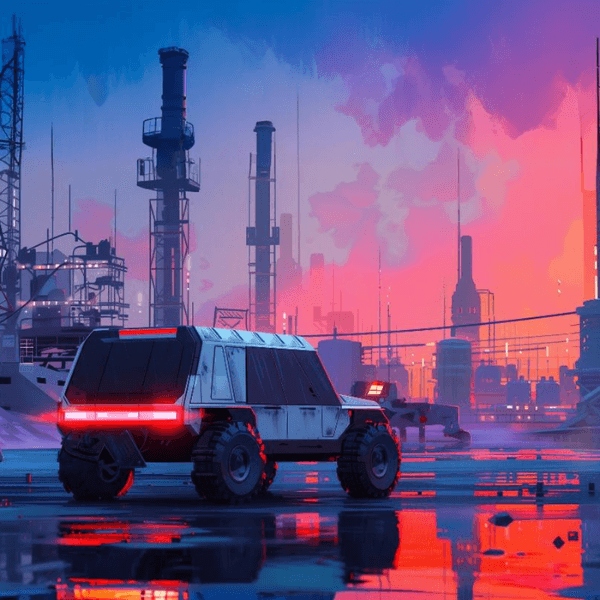A game trailer serves as a window into the immersive world you’ve created. It’s the first impression that can spark excitement and curiosity among gamers. In an era where attention spans are shrinking, a compelling game trailer can be the key to making your game stand out. This guide explores the essential elements of crafting a captivating game trailer with video animation and how you can make it resonate with your audience.
1. Understanding Your Audience
The foundation of a successful game trailer lies in understanding your audience. Are you targeting casual gamers, hardcore enthusiasts, or a niche community? Each group has distinct preferences and expectations.
- Casual Gamers: Focus on lighthearted and visually appealing animations that highlight fun and simplicity.
- Hardcore Gamers: Showcase intense gameplay moments, competitive features, and stunning graphics.
- Niche Communities: Tailor the trailer to reflect specific themes or genres, such as retro gaming or role-playing.
Research your audience’s preferences through surveys, forums, and social media platforms. This insight will guide the tone, style, and content of your trailer.
2. Defining the Purpose of Your Trailer
A game trailer can serve various purposes, and identifying its primary goal is crucial:
- Teaser Trailer: A short, intriguing glimpse to generate initial buzz.
- Launch Trailer: A comprehensive showcase of gameplay, story, and features to drive purchases.
- Cinematic Trailer: A visually stunning narrative that emphasizes the game’s story and atmosphere.
- Gameplay Trailer: A deep dive into mechanics, graphics, and player experience.
Each type requires a unique approach to animation and storytelling. For example, a cinematic trailer may prioritize 3D animation and dramatic visuals, while a gameplay trailer might use motion graphics to highlight key features.
3. Crafting a Compelling Narrative
Storytelling is at the heart of every great trailer. Even in a short runtime, your trailer should have a clear beginning, middle, and end.
- Beginning: Set the stage with an intriguing hook. Use animated sequences to introduce the game’s world or protagonist.
- Middle: Build tension and excitement by showcasing gameplay, challenges, or conflicts.
- End: Leave a lasting impression with a powerful climax or a call to action.
Tips for Effective Narratives
- Use Visual Metaphors: Animation allows for creative storytelling. For example, use shifting landscapes to represent a character’s journey.
- Incorporate Voiceovers: A well-crafted voiceover can add depth and context to the visuals.
- Highlight Unique Selling Points (USPs): Focus on what sets your game apart, such as innovative mechanics or a unique art style.
4. Leveraging Animation Styles
Animation is a versatile tool that can bring your game trailer to life. Here are some popular styles:
- Best For: Indie games, retro-inspired titles, or casual games.
- Advantages: Affordable, charming, and nostalgic. 2D animation works well for trailers that emphasize simplicity and creativity.
- Examples: Animated character introductions, side-scrolling gameplay previews, or vibrant cutscenes.
- Best For: AAA games, immersive RPGs, or games with detailed graphics.
- Advantages: Realistic visuals, dynamic camera angles, and cinematic appeal. 3D animation can showcase the depth and complexity of your game world.
- Examples: Cinematic battle sequences, panoramic views of in-game environments, or realistic character animations.
- Best For: Highlighting features, stats, or mechanics.
- Advantages: Clean, professional, and informative. Motion graphics can simplify complex ideas and emphasize key points.
- Examples: HUD elements, skill trees, or progression systems.
5. Balancing Pacing and Engagement
The pacing of your trailer plays a crucial role in maintaining viewer interest. A well-paced trailer alternates between fast and slow moments to create a dynamic experience.
- Opening: Start with a captivating scene or animation that grabs attention within the first few seconds.
- Middle: Use a mix of gameplay and cinematic sequences to sustain engagement.
- Ending: Conclude with a memorable highlight or cliffhanger that leaves viewers wanting more.
Techniques to Enhance Pacing
- Music Synchronization: Align animation transitions with beats or crescendos in the soundtrack.
- Quick Cuts: Use rapid edits to showcase action-packed moments.
- Pauses: Include brief moments of stillness to emphasize dramatic scenes or dialogue.
6. Sound Design and Music
Audio is a powerful tool that enhances the emotional impact of your trailer. Combine sound effects, voiceovers, and music to create a cohesive auditory experience.
- Sound Effects: Use immersive sounds like footsteps, explosions, or ambient noise to bring scenes to life.
- Voiceovers: Narration or character dialogue can add context and personality.
- Music: Choose a track that complements the tone of your game. For instance, an epic orchestral score works well for RPGs, while electronic beats suit futuristic settings.
7. Editing and Post-Production
The editing process ties everything together. Pay attention to transitions, visual effects, and colour grading to enhance the overall quality.
- Transitions: Smooth cuts, fades, or animated transitions maintain visual flow.
- Visual Effects: Add depth with particle effects, lighting, or lens flares.
- Colour Grading: Use colour palettes to reflect the game’s mood or theme.
Post-Production Tools
- Adobe After Effects: Ideal for motion graphics and visual effects.
- Blender: A powerful tool for 3D animation and rendering.
- DaVinci Resolve: Great for colour grading and final edits.
8. Testing and Feedback
Before releasing your trailer, gather feedback from focus groups, beta testers, or industry professionals. Look for:
- Clarity: Is the message clear and easy to understand?
- Engagement: Does the trailer maintain interest throughout?
- Call to Action: Is the next step (e.g., visiting a website or wishlist) clear?
Use feedback to refine your trailer and address any weaknesses.
9. Promoting Your Game Trailer
Once your trailer is ready, it’s time to share it with the world. Use a multi-channel approach to maximize visibility:
- Social Media: Share the trailer on platforms like YouTube, Twitter, Instagram, and TikTok. Optimize for each platform’s format and audience.
- Gaming Communities: Post on forums, Reddit, and Discord servers related to your game’s genre.
- Press and Influencers: Reach out to gaming journalists and content creators for coverage.
- Paid Ads: Invest in targeted ads to reach your ideal audience.
Conclusion
Creating a captivating game trailer is an art form that combines visual storytelling, emotional engagement, and strategic pacing. By utilizing 2D animation, 3D animation, and motion graphics, you can craft a trailer that captures attention, builds excitement, and drives anticipation. Whether you’re creating a teaser or a full-length trailer, Wenimate has the expertise to bring your vision to life.
Let’s create something extraordinary. Contact Wenimate today to get started on your next game trailer project.


